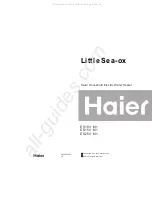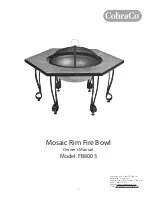
8
4
5
Description of the Symbols
Do not set at place that is too cold and may freeze.
Do not set at outdoor places.
Do not use as floor standing appliances.
Please mount it to firm and reliable wall.
Do not install to places without sewage.
Connect the drain hose to the inlet of the sewer to
avoid polluting by splashing.
Never do that.
Be sure to act as per instructions.
Connection and use of safety valve:
The safety valve should be connected to the water inlet pipe. Please check carefully if
the direction is correct after installation. The correct direction of installation is that the
arrowhead on the safety valve should point to the water heater.
Please connect the drain hose to the safety valve. Connect one end of the hose to the
safety valve vent and the other end to the sewage drain for fear of indoor
contamination. The hose can be cut short or extended as necessary. The hose shall be
installed as inclined downward.
The heater should work with the safety valve whose rated pressure is 0.80MPa.
Installation
Setting Environment
Installation
Setting Environment
Cold water inlet
Mixing
valve
Hot water
outlet valve
Cold water
outlet valve
Shower head
(Figure 3) for installation
reference only
Hot water outlet
Safety valve
(Figure 2)
Extended connection line
Wall rack
Expansion
hook
The original pipeline of the water heater is an organic part of “Safe Care”. Do not remove it by yourself.
Otherwise we will not take responsibility for injury and loss caused by the safety danger occurring.
Installation must be made by installers of, or designated by, our company after-service
department. The water heater shall be wall-mounted.
Make 2 holesφ12mm, 65mm deep in wall with an impact drill according to the
installation dimension. Insert and fix expansion hooks in corresponding wall holes. Lift
the water heater. Make wall rack corresponding to the hooks. Hang the ring of the
extended connection line onto a hook and hang the wall rack (see Figure 2). Install
accessories such as safety valve as shown in Figure 3. Use sealing compound to
prevent water leakage.
To facilitate installation and removal, it is suggested a G1/2” movable nut be fitted at
appropriate locations on inlet and outlet pipes respectively. Find the location requiring
hot water supply. Connect inlet pipe, outlet pipe and city water pipe respectively to the
use point for hot water.
Note: The hot water pipe shall not be too long to reduce heat losses.
Please reserve some space in installation for the future maintenance.
All manuals and user guides at all-guides.com
all-guides.com
























